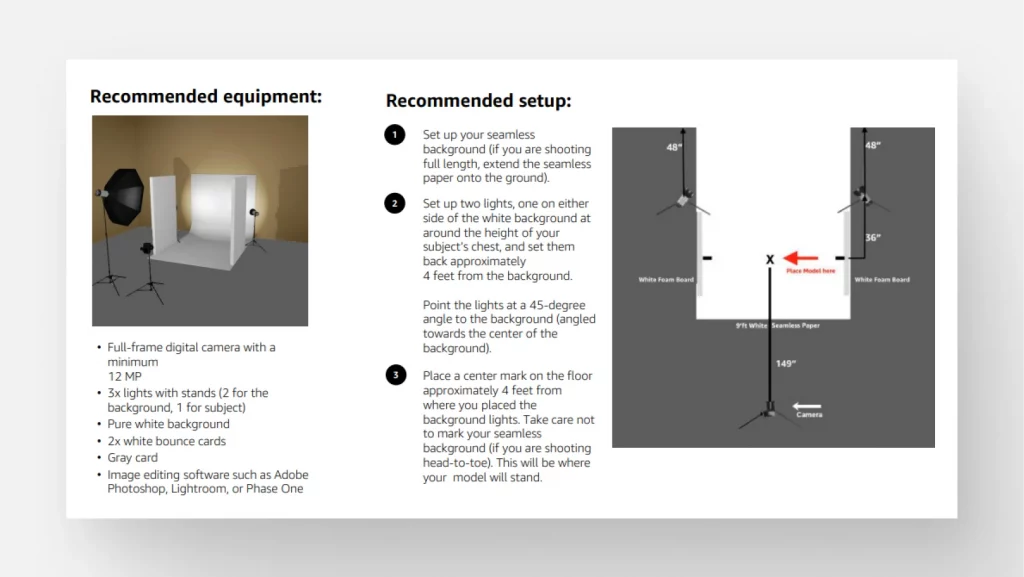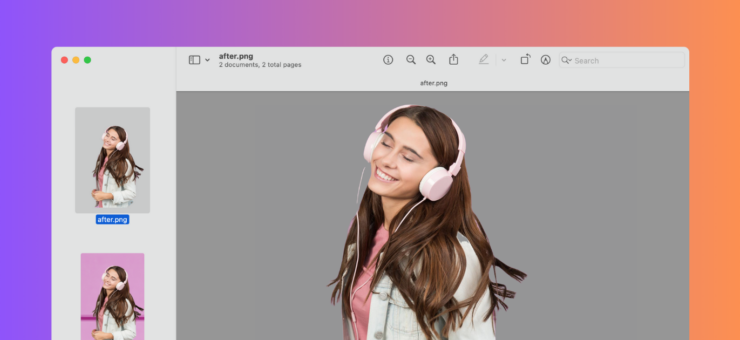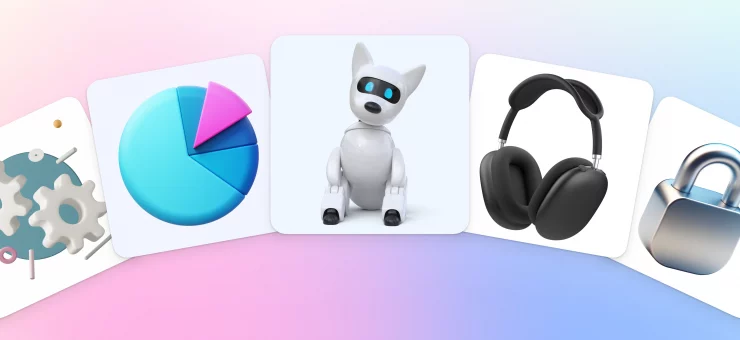Unlock Amazon sales in 2024! Master product photography with our no-nonsense guide – from lighting to budget tips, make every image count.
Welcome to the world of Amazon, where your product images aren’t just pictures, they’re your front-line sales force. Amazon’s standards for product images are more than just guidelines—they’re the playbook for turning browsers into buyers.
In this guide, we’re cutting through the jargon to give you a no-nonsense breakdown of Amazon’s image requirements. Whether you’re shooting a chic scarf or a rugged backpack, we’ll help you understand what Amazon expects from your product photos. This isn’t just about ticking boxes; it’s about crafting images that resonate with customers and drive sales. Let’s dive in and turn your product images into Amazon’s next stars!
Table of contents
- Types of images on Amazon
- Key image requirements for Amazon
- Best practices in product photography for Amazon
- Amazon product photos: making them pop
- Making great Amazon photos on a budget
Types of images on Amazon
Amazon’s visual landscape is diverse, and knowing the types of images you can use is key to optimizing your product’s appeal. Here’s a breakdown of the different image categories and their purposes:
- Main images
- Role. The primary visual for your product. It’s what customers see first in search results and on your product page.
- Requirements. It must have a pure white background and show the product is filling at least 85% of the image frame. JPEG format is preferred.
- Purpose. To provide a clear, straightforward view of your product.
- Variant images
- Role. Show different views of the product to clarify usage, detail, fabric, cut, etc.
- Limits. You can supply up to six alternate images, totaling seven per SKU (including the main image).
- Purpose. To highlight different aspects of the product, like details, material, or styling options. Variant images can also include styled shots or flat lays.
- Child images
- Role. Display the product in specific colors or patterns for a given child SKU.
- Usage. It is essential for products with multiple color or pattern options, allowing customers to see each variant.
- Purpose. To give a realistic view of each product variation.
- Swatch images
- Role. Small thumbnail images show different available colors, fabrics, or other choices.
- Placement. Appear on the product detail page next to color or pattern options.
- Purpose. It helps customers visualize and select different product variations.
- Lifestyle images
- Role. Show the product in a real-life context or being used.
- Effect: Helps customers imagine the product in their lives, often increasing the perceived value and utility.
- Infographic images
- Role. It conveys information about the product visually engagingly, often including text, icons, or diagrams.
- Purpose. To explain features, sizes, or benefits that are not easily conveyed through standard photos.
Each type of image plays a unique role in showcasing your product and providing customers with a comprehensive view. By utilizing these image types effectively, you create a richer and more informative shopping experience for your customers on Amazon.
Key image requirements for Amazon
Amazon’s image requirements aren’t just hoops to jump through; they’re your blueprint for creating images that sell. Here’s what you need to keep in mind:
Main image must-haves
- Pure white background. RGB value of 255, 255, 255. This clean backdrop makes your product pop and ensures consistency across the Amazon platform.
- Product focus. Your product should fill at least 85% of the image frame. This rule ensures that the product and the image’s focal point are clearly visible.
- No additional graphics or text. Keep it simple. The main image should only feature the product, with no extra text, logos, or graphics.
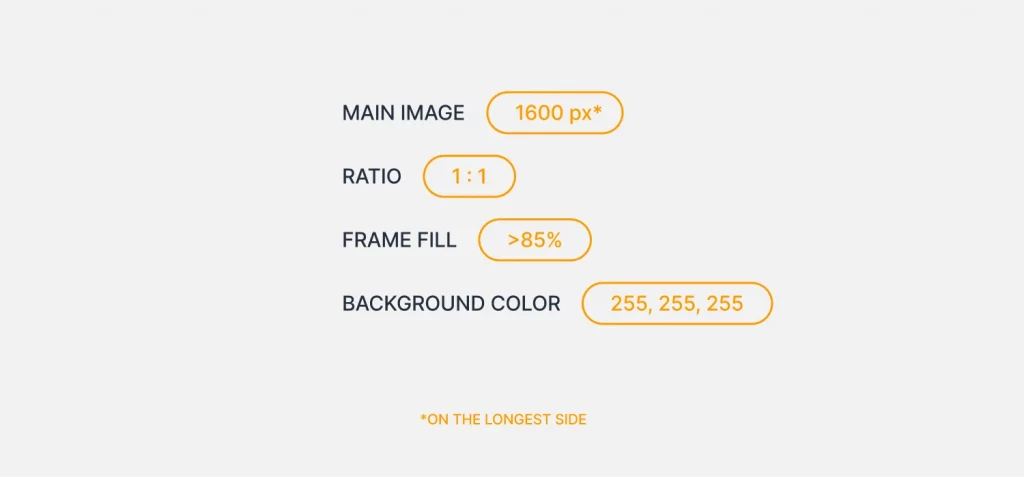
Image quality and resolution
- High-resolution images. Aim for a minimum height of 1600 pixels. This size enables the zoom function, allowing customers to see finer details and textures, building trust and interest.
- Resolution standards. To ensure your images look sharp and professional, maintain a resolution of at least 72 dpi (dots per inch).
File format and color profile
- Preferred file formats. JPEG (preferred), TIFF, PNG, or non-animated GIFs. These formats are widely supported and ensure good image quality.
- Color accuracy. Use the RGB color profile for vivid and accurate color representation on digital screens.
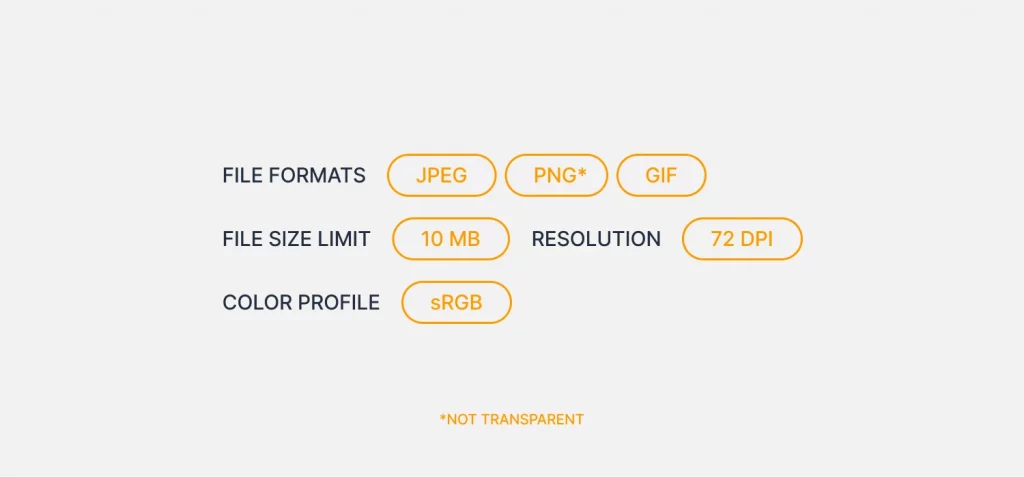
Naming your files
- Systematic approach. Develop a consistent naming system for your files. This could include the product SKU, a brief description, and the image type (e.g., main, detail, lifestyle).
- Avoid special characters. Use simple alphanumeric names and avoid special characters and spaces. This prevents upload errors and ensures better compatibility with Amazon’s system.
File size limits
- Max size. Be mindful of Amazon’s maximum file size limits for listings. Images should not exceed 10,000 pixels on the longest side and should be optimized for web use without compromising quality.
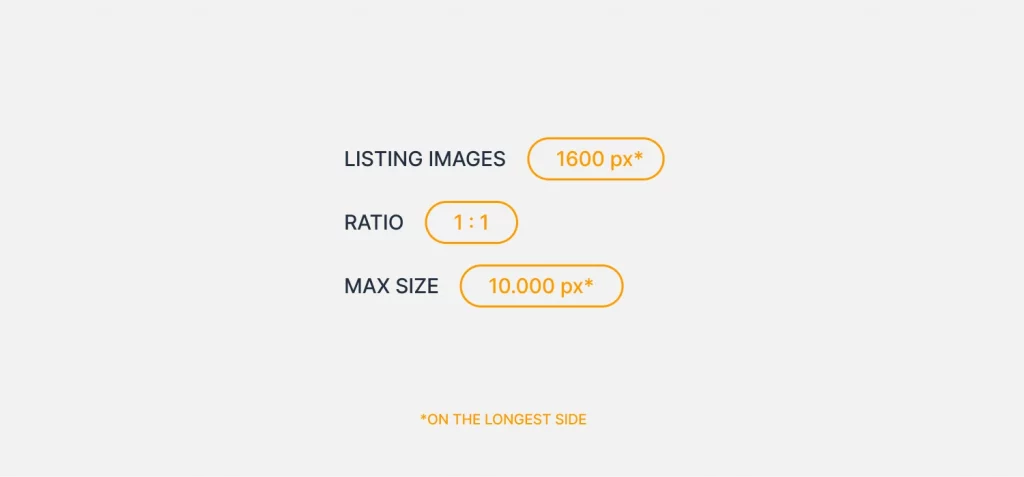
Organizing your images
- Consistent filenames. Keep filenames consistent across all images for a single product. This helps you organize and manage your product catalog.
Video specifications (if applicable)
- Formats for videos. Videos should be in MOV or MP4 format, with MP4 preferred for its compatibility and quality.
- Quality and length. Ensure videos are high quality, informative, and concise to engage potential buyers effectively.
Adult apparel vs. kids and baby accessories
- Adult apparel. Should be presented on-model, showcasing how the clothing fits and looks when worn.
- Kids and baby accessories. These should be displayed off-model, focusing solely on the product itself.
Prohibited content
- Strict no-nos. Avoid nudity, sexually suggestive poses, or anything that could be deemed offensive. This is particularly crucial in categories like intimate clothing.
Consistency across listings
- Uniformity. Ensure all images in a listing maintain a consistent look and feel. This consistency builds brand trust and makes your listings more professional.
Amazon product photos: making them pop
- Lighting’s a big deal. Get it right with natural or studio light. Keep it consistent to avoid those amateur vibes.
- Details, details, details. Close-ups are your friend. Show off those textures and get shots from different angles.
- Context matters. Show your product in real life. It helps customers get the picture.
- Keep it real. No trick photography. What they see should be what they get.
- Styling 101. Less is more. Props? Only if they make sense. Keep the focus on what you’re selling.
- Tech talk. Use a decent camera and a tripod. Blurry pics are a no-go.
- Edit smart. A little touch-up is fine, but don’t go overboard.
- Know your crowd. Tailor your photos to what your buyers like. It’s all about connecting.
Lighting done right
- Mix and match. Natural for that soft touch, studio for control.
- Setup Is key. Three lights to kill the shadows. Use diffusers to soften things up.
- Background checks. Even lighting for that clean white backdrop.
- Color temperature matters. Set the white balance to match your lights.
Styling like a pro
- Simple sells. Keep the setup clean. Clutter is a distraction.
- Model choices. Adult clothes on models, kids’ stuff off.
- Consistent style. Same look across all shots.
- Get the details right. Iron those clothes, place your product just so.
- Color and contrast. Make your product stand out but in a good way.
- Show all options. Got variations? Show them off clearly.
Check out the full PDF for more on lighting setups and real listing examples. This guide is your ticket to nailing those Amazon product shots—less fluff, more selling.
Additional considerations and prohibited content
While adhering to Amazon’s image requirements and technical specifications, there are additional considerations and specific content prohibitions that sellers should be aware of to ensure their listings remain compliant and effective:
- Cultural sensitivity and inclusivity
- Be mindful of cultural sensitivities and aim for inclusivity in your imagery. This includes considering various models and contexts that reflect a broad customer base.
- Prohibited content
- Avoid images that contain nudity or are sexually suggestive, especially in categories like intimate clothing and swimwear.
- Do not include images with explicit or violent content, as these will be rejected and could lead to listing removal.
- Misleading imagery
- Ensure your images accurately represent the product and do not mislead customers regarding its features, size, or functionality.
- Trademark and copyright compliance
- Respect intellectual property rights; do not use images that infringe on trademarks or copyrights.
- Avoid using third-party logos, brand names, or copyrighted material without explicit permission.
- Use of text and graphics
- While the main image should be free of text and graphics, use them judiciously in alternate images for informative purposes, like highlighting features or dimensions.
- Packaging and unboxing experience
- Consider including product packaging images, especially if it’s a key part of the customer experience or brand identity.
- Images showing the unboxing experience can be valuable, particularly for premium or gift items.
- Seasonal and contextual relevance
- Align your images with seasonal themes or events where appropriate to increase relevance and appeal.
- Regular updates
- Keep your product images up-to-date, especially if there are changes in the product design, packaging, or features.
Making great Amazon photos on a budget
There are practical and affordable solutions for those looking to create standout Amazon product photos without spending a fortune. Here’s how savvy sellers are doing it:
Leveraging natural light. Instead of investing in expensive lighting equipment, they utilize natural light. A well-lit spot near a window can provide soft, flattering illumination that enhances product features.
DIY backdrops. A simple, plain white sheet or board can serve as an effective backdrop, offering a clean and professional look without the cost of a professional setup.
Using Background Remover. Tools like Background Remover come to the rescue when the background isn’t quite right. This helps in achieving that perfect, distraction-free background essential for product photos.
Just upload your picture and let the AI do the magic.
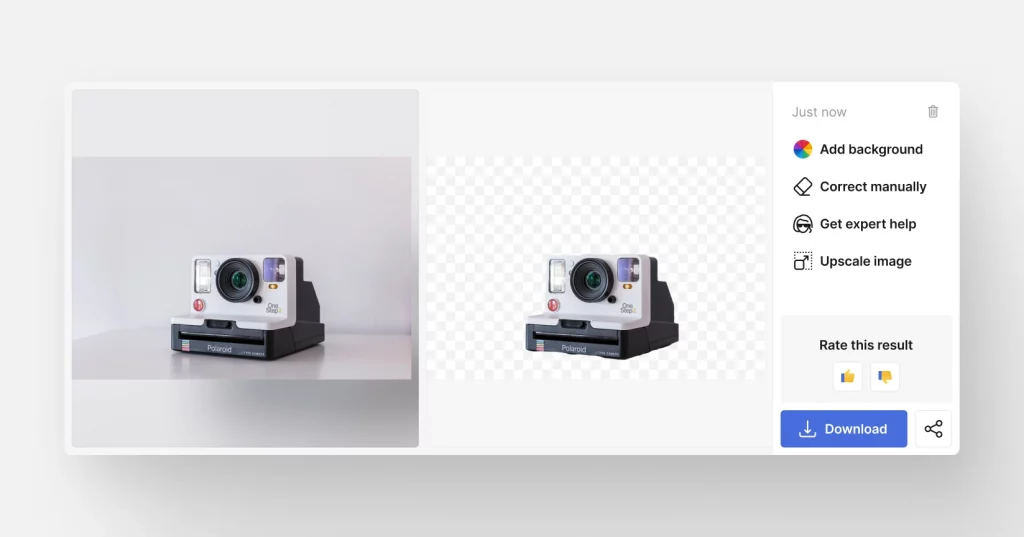
Manually correct the result (if needed) and add a white background.
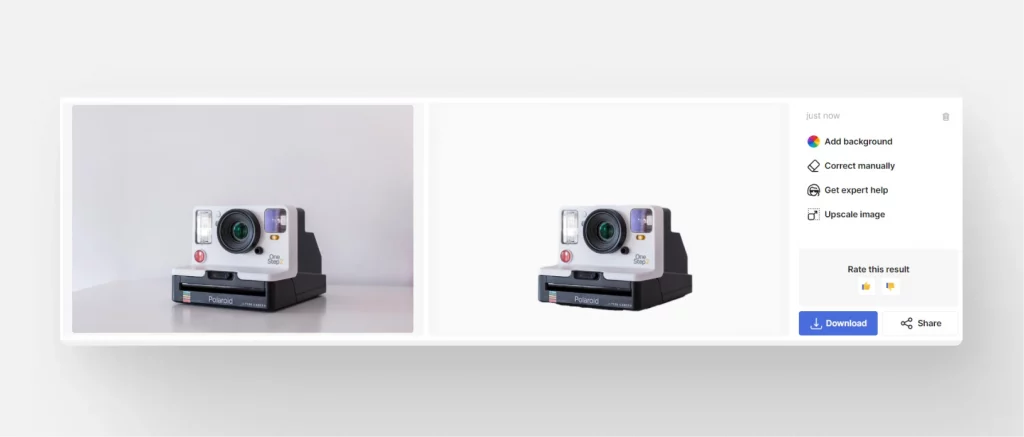
Smartphone cameras for photography. With the advanced smartphone camera technology, sellers capture high-quality images without the need for expensive cameras.
Enhancing images with Smart Upscaler. When images lack sharpness, Smart Upscaler improves the quality, giving photos with less advanced equipment a more professional finish.
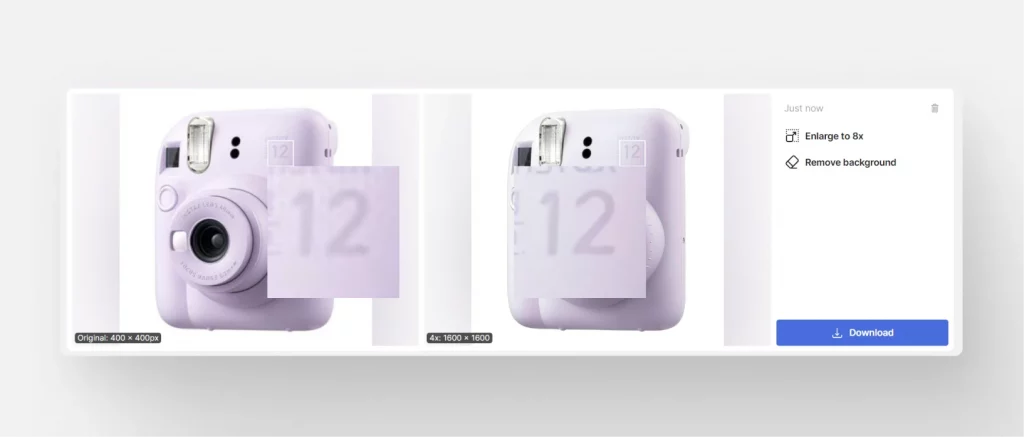
Bulk editing with GoProd. Sellers turn to GoProd to handle multiple images efficiently. This tool is a boon for bulk background removal and image upscaling, ensuring consistency across all product photos.
Adopting these budget-friendly strategies allows you to produce high-quality, compelling images for their Amazon listings, proving that effective product photography doesn’t always require a big investment.
Wrapping up
Nailing your Amazon images? It’s not rocket science, but it’s close. Think of it as your secret weapon in the cutthroat world of online sales. Every pixel counts, every shadow plays a part, and every color brings your product to life. It’s not just about ticking Amazon’s boxes; it’s about making your product jump off the screen and into customers’ carts.
So, keep these tips in your back pocket. Remember, a little effort in your photography today can turn into a lot of sales tomorrow. Get your lighting right, style like a pro, and let each image be a testament to your product’s worth.
Check out our image size guides for Shopify, Redbubble, Etsy, and eBay.

